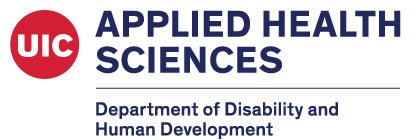By Christy Bloemendaal
In a recent conversation about resources for the disabled community, I found out about CITE Libraries. Apparently, they exist in every state and province, and they contain technology and hardware that people can “check out” for several weeks to see if they are items that would benefit us and create greater accessibility. Brilliant!
How had I not heard about this? Where are these libraries? What is this ingenious and magical place? I wanted to know more! So, I went to the internet to search…
And I could not find them.
When I looked for “CITE Library” there was not a single result about Community Inclusion through Technology which is apparently what the letters stand for. So, I searched for “Community Inclusion through Technology” and got articles about the subject but no actual places offering me that technology.
And I should have anticipated this problem since our initial discussion about these tech resources wasn’t just about their availability but was about the way that these resources are not advertised, and so their online presence is in no way optimized. The people who need these services can therefore not find them--which my search was proving true.
After several failed searches, I emailed the person I had been speaking with, a resident of Maine, who sent me this link to their location for such services. From there I found this AT3 website which has a drop down that lets you search for your local center. I discovered that my local center is the Illinois Assistive Technology Program which can be reached at this site.
Finally, after literal days of searching, I looked some things up on the library. I looked for mobility items and found a few items, including a clamp that holds tech to your wheelchair, and a cool seat for kids with mobility and sensory challenges called the tomato sitter. However, some of these things didn’t have photos included and some of them are waitlisted, which prompted further research. And none of them were easy to FIND!
There was a technological labyrinth that I had to navigate, based on a conversation, and with a tip and an email exchange to start it off. If I were a disabled individual just trying to find some info from a Google search, there is NO WAY that I would have found this resource on my own.
I cohost a podcast about disability and related issues—The Disability Tangent. We do work to make sure that we are visible with hashtags and keywords and social media. And it is still hard to get our words into the space where our listeners are. How much harder must it be when there are no efforts to advertise or optimize or get the word out about these library resources?
But what good does it do to have resources available for the disabled community if they don’t know they are there? And how does it help if we are frantically looking for information and it doesn’t pop up in our searches? This is a huge problem!
The accessibility supports that we need don’t just need to exist. Those supports themselves need to be accessible!
Whether this is affordability, physical accessibility, or SEO optimization, the items that are for us, need to be in front of us and placed into our hands. Things aren’t accessible unless we have access in every sense of the word.
So, if you run one of these libraries, consider how you can get the word out. If you create products, consider how to make them reasonably accessible for everyone in the community. If you are a web designer, an influencer, a graphic wizard, etc., donate some time to these places so that they can improve the way they present their products to the world.
Give us equal access to the things we need. Help make these things searchable, available, and a part of our everyday life.







